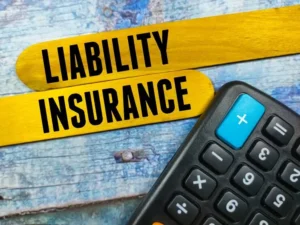Table of Contents
Home insurance is protection for one of the most significant investments you will ever make, your home. It gives you financial protection for all manner of damages and losses, ensuring that you have peace of mind. However, trying to make sense of the myriad of policies, coverage, and terms can be quite daunting.
Insurance – In this guide to home insurance, we outline the very basics: what it is, why it’s an essential aspect of homeownership, types of policies, among many more.
At the end of this guide, you will be well-equipped to make every right decision as it regards protection against your home. We will be explaining what home insurance involves, showing the components, significance, and different policy types available.
By the end of this guide, you will be in a better position to make decisions about protecting your home. We try to make the complexities of home insurance a little more understandable. Well now, we’ll go over just exactly what home insurance is, why it’s important, the several different kinds of policy options, and the component parts that would make up a typical policy.
These components will enable you to make an informed decision so that you can determine whether your house and personal belongings have adequate coverage the Basics of Home Insurance. Whether one is buying a home for the first time or updating the existing policy, this guide will provide all the necessary knowledge to maneuver comfortably in the world of home insurance.
Home Insurance: What It Is and Why You Need It
Home insurance is more popularly known as homeowner’s insurance. It is a form of property insurance that pays out for losses and damages to one’s house and assets inside the home. The insurance covers liability arising due to accidents in the home or on the premises.
The main aim of home insurance is to safeguard your home and its contents from sudden peril such as theft, fire, natural calamities, and other similar perils. Without home insurance, there are a number of out-of-pocket expenses you could incur to repair or replace your home and its items.
Home insurance provides protection not only financially but also against any risks that could happen suddenly to your home and valuables. This coverage insures you against loss from natural calamities, theft, and accidents that occur on your premises.
It covers not only your home’s structure but also your personal property and can even offer liability in case someone hurts themselves on your property. Without this vital coverage, you could be facing thousands upon thousands of out-of-pocket expenses that might put a serious ding in your financial stability.
For this reason, taking out home insurance is not only a smart decision but a necessary one toward the goal of ensuring that your most valuable asset will remain intact while having peace of mind.
Different Types of Home Insurance Policies
There are several different types of home insurance policies, each suited to specific needs and levels of coverage. Some of the most popular include:
- HO-1 Basic Form: covers against named perils such as fire, theft, and select natural disasters.
- HO-2 Broad Form: broader coverage than HO-1, covering more perils.
- HO-3 Special Form: This is by far the most purchased policy, offering coverage for all perils except those that are excluded.
- HO-4 Renters Insurance: Renters can use it to cover their personal property and liability.
- HO-5 Comprehensive Form: This is the most comprehensive coverage under the policy, for high-value items.
- HO-6 Condo Insurance: For condominium owners, used to insure personal property and interior parts.
- HO-7 Mobile Home Insurance: Applies specifically to mobile or manufactured homes.
- HO-8 Older Home Insurance: It covers actual cash value for older homes.
The various forms of home insurance policies deal with the different needs and circumstances and, thus, offer variable levels of cover. While HO-1 Basic Form is quite restricted and covers only specific perils, such as fire and theft, HO-2 Broad Form has a broader outreach by accommodating other perils .
This includes the HO-3 Special Form, which is the most sold policy and provides very broad coverage for all perils except those specifically excluded. Then there is the HO-4 Renters Insurance, which covers personal belongings and liability. Finally, the HO-5 Comprehensive Form protects high-value items and provides broader coverage than the standard HO-3.
The owners of condos can select the HO-6 Condo Insurance, which would provide personal property and parts of the interior. The HO-7 Mobile Home Insurance is assigned for mobile or manufactured homes, while the HO-8 Older Home Insurance is designed to deal with older homes and actual cash value. Understanding these different types will let you select the right policy that will suit your needs and protect your home and personal belongings accordingly.
Key Components of Home Insurance Policy
Normally, home insurance policy covers a few key components. Among these are the following:
- Dwelling Coverage: Insulates your home’s structure from covered perils.
- Other Structures Coverage: Covers the other structures on your property, including but not restricted to garages and sheds.
- Personal Property Coverage: Covers all the personal belongings, in case of theft or damages.
- Liability Coverage: Comes in handy when any accident happens on your property and you get sued by the victim for his injury.
- ALE: pays for additional living expenses when one cannot live in their home while it is under repair
- Medical Payments Coverage: Pays medical expenses of guests in your premises when injured.
The first thing to do to get full protection is to know the fundamentals of home insurance. Firstly, dwelling coverage forms the very basis of home insurance policies since it covers the physical structure of your home against certain risks, which include fire, windstorms, and vandalism, among others. Additionally, other structures coverage extends protection to other buildings on your property, including detached garages and sheds.
Personal property coverage insures your possessions, from furniture to electronics, against theft or damage. Then there’s liability coverage: that is another important part of your policy that will help protect you financially in case an injury occurs on your property or if you happen to accidentally cause damage to someone else’s property.
Additional Living Expenses ALE coverage is invaluable in case your home becomes uninhabitable after a covered event covers temporary housing and related expenses. And finally, medical payments coverage pays the medical bills of guests injured on your property regardless of fault. Understanding such important components leaves one at liberty to tailor-make their policy and ensure their home and assets are highly protected.
Things That Influence Home Insurance Premiums
Any number of several factors can influence how much your home insurance premiums cost. These include:
- Location: Homes in regions prone to natural disasters or with higher incidents of crime usually pay more for premiums than homes in “safer” zones.
- Age and State of the Home: The insurance premium might be higher for older homes or for homes whose condition is not as good.
- Coverage Limitation: Often, the higher the coverage limit, the higher the premium amounts.
- Deductible: An amount that you pay out of pocket before insurance kicks in. The higher the deductible amount, the lower your premium generally will be.
- Claims History: A history of claims can increase your premium.
- Credit Score: Many insurance companies use credit scores to determine the level of risk.
Your home insurance premiums will depend on several factors. The property location, for one, means a great deal when trying to determine the rate; those houses that fall under regions prone to natural disasters or high rates of crime have a higher rating bracket. How old your house is also matters in cost, or the condition it comes in, because older houses, or those that come in worse states, will not be cheap to insure.
The amount of coverage you select will have an immediate reflection on your premium since more cover equals higher cost. Another factor that influences premiums is the amount of deductible-the amount of out-of-pocket expenses one needs to incur before the insurance coverage actually kicks in. Higher deductibles are translated into lower premiums. Claims history provides more importantly an accurate basis for calculation of premiums: a history of repeated claims may raise your premium. Last but not least, with low credit scores, insurers generally charge higher because they use credit scoring for determining the level of risk.
Tips to Find Perfect Home Insurance
Finding perfect home insurance can be a very uphill task. Following are a few suggestions that may help you find the best policy:
- Assess Your Needs: Determine how much coverage you need based on the value of your house as well as your personal property.
- Compare Several Quotes: It is a good idea to obtain quotes from different insurers to get the best rates and coverage.
- Check the Insurance Company’s Reputation: Find out its financial status and read customer reviews about its service.
- Understand Your Policy: Read your policy carefully to know what all it covers and what it doesn’t.
- Discounts on Premium: Ask whether you can avail discounts for policy bundling, the installation of security gadgets, or for maintaining a good claims history.
While opting for the best home insurance, analysis of one’s own needs and situation becomes critical. Estimate the value of your home and personal belongings first to determine the coverage. The need for a more favorable rate either by better comparative quotations or an adequate coverage option is possible with multiple quotations from a variety of insurers.
In addition, it is necessary to check the insurer’s reputation with regard to its financial stability as well as their customer service. Understand fully your policy, which must denote what is covered and what is not, so that you have an idea of what is actually covered. Also, make sure you ask for discounts offered in bundling policies, installing security systems, or having good claims history.
How to File Home Insurance Claim
Filing a claim on home insurance involves several steps that are necessary for this process to run smoothly. These include:
- Reporting the Incident: You first have to report the incident to your insurance company in case any damage or loss occurs.
- Document Damage: Take pictures or shoot video footage of the damages. Create an inventory of the items lost or damaged in the catastrophe.
- Complete Claim Forms: Fill out the claim forms from your insurance company.
- Meet the Adjuster: An adjuster will assess the damages and award the financial worth of those damages.
- Get Paid: Once there is a claim approval, you’ll get paid to cover for repairs or replacements.
Filing a home insurance claim requires several steps that may help keep the process smooth. First, immediately contact your insurer and describe in detail what happened, including the nature of the loss or damages sustained. Then, document damage through photographs or video, while making an inventory of lost or damaged items.
Next, fill out the claim forms from your insurance provider that are required with complete and accurate information. After submitting these forms, an adjuster is assigned to inspect the damage and determine how much money is owed to you. Lastly, it gets paid upon acceptance of your claim, and it repairs or replaces what was lost to get your house back in order and your life right.
Common Home Insurance Myths Debunked
There are some misconceptions related to home insurance that help further misunderstandings:
- Myth: Flood Damage is Covered: Most, if not all, standard home insurance policies do not cover damage from floods; instead, one would have to buy separate flood insurance.
- Myth: Home Insurance Covers All Valuables: High-value items such as jewelry are usually partially covered and in most cases, require additional endorsement.
- Myth: Every claim rises with the premium. Actually, not all claims raise premiums; this highly depends on the nature and frequency of the claims.
- Myth: I rent and don’t need home insurance. Renters also need insurance for their personal belongings and liability.
That home insurance automatically covers water damage. Standard policies usually cover the water damage that occurs in a sudden and accidental nature-think burst pipes-but they usually exclude any damage due to poor maintenance or gradual leaks.
Others might believe sewage backups or water damage resulting from flooding is covered, when in reality it often takes separate endorsements or flood insurance. Knowing what’s the difference is important so you get the right one and aren’t stuck with unexpected expenses out of pocket.
Conclusion
Home insurance is one aspect of home ownership that does, in fact, provide some basic protection against many risks and perils. Understanding the different types of policies, important components of those policies, and what drives premiums will allow you to make an educated decision.
Taking the time to understand your needs, comparing quotes from various insurance companies, and really understanding what is covered under your policy will provide the right cover for your home and, importantly, your peace of mind.
It is an important feature of home ownership because it provides protection against a variety of hazards and risks. Knowledge of the varying forms of policies, key components of policies, and the important factors determining their premiums are essential when making appropriate decisions. Take your time by assessing your needs, comparing several quotes, and thoroughly reading your policy to obtain the right kind of insurance coverage for your home, so you can have peace of mind.
FAQ
Q: What does home insurance usually cover? A: Ordinarily, home insurance covers the structure of your home, personal belongings, liability protection, and additional living expenses while you live elsewhere as your home is under repair.
Q: Is home insurance obligatory? A: Though home insurance is not legally demanded, almost all mortgage lenders do require it in favor of their interest in the property.
Q: Can I already change my home insurance policy? A: Yes, you may adjust your coverage, change to another insurance company, and revise any details in your policy at any time as you deem necessary. The policy should be periodically reviewed whether it covers your needs relevant at present.









